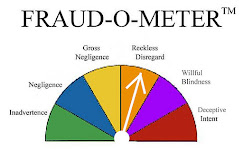TTABlog Quarterly Index: October - December 2021
E-mail subscriptions to the TTABlog are available. Just enter your e-mail address in the box on the right to receive a daily update via Feedblitz. You may also follow the TTABlog on Twitter: @TTABlog.

Section 2(a) - Deceptiveness:
Section 2(d) - Likelihood of Confusion:
- TTABlog Test: Are Hockey Sticks Related to Sports Gloves Under Section 2(d)? [Yes]
- Precedential No. 35: TTAB Grants MIRAGE BRANDS Cancellation Petition Due To Likelihood of Reverse Confusion
- On Remand from the CAFC, TTAB Denies Petition for Cancellation of "NAKED" Registration for Condoms
- TTABlog Test: Three Recent Section 2(d) Inter Partes Cases - How Did They Come Out?
- TTABlog Test: Are Glass Ornaments Related to Dried Flower Arrangements Under Section 2(d)? [Yes]
- TTABlog Test: How Did These Three Section 2(d) Oppositions Come Out?
- TTABlog Test: Is "SAMSUNG WIZ" for Smartphones Confusable with "THE WIZ" for Consumer Electronics Retail Services? [Yes]
- TTABlog Test: Are Dietary Supplements Related to Skincare Products Under Section 2(d)? [Yes]
- TTABlog Test: How Did These Recent Section 2(d) Appeals Turn Out?
- Crowded Field of Third-Party Registrations and Uses Leads to TTAB Reversal of "MATCH STUDIO" Over "MATCH" for Clothing
- Licensee's Prior Common Law Use Established Priority for "SNORE MD" Mark
- TTABlog Test: Is "BEDLAM VODKA & Design" for Vodka Confusable With "BEDLAM! & Design" for Beer? [Yes]
- TTABlog Test: Which of These Three Section 2(d) Oppositions Was Dismissed?
- TTABlog Test: Is "ICY (Stylized)" Confusable With "ICEE" for Clothing? [No]
- TTABlog Test: How Did These Recent Section 2(d) Appeals Turn Out?
- TTABlog Test: Which of These Three Section 2(d) Refusals Was Reversed?
- TTABlog Test: Is ZERO MEAT Merely Descriptive of Animal, Fish, and Poultry Certification Services? [Yes]
- TTABlog Test: Is "GOAT GREATEST OF ALL TIME" Merely Descriptive of Vodka? [Yes]
- WYHA? TTAB Finds "5 DAY FASTING DIET" Merely Descriptive of Nutritionally Balanced Prepared Meals [Yes]
- Precedential No. 30: TTAB Reverses Descriptiveness Refusal of TAVERNA COSTERA, Declining to Apply Doctrine of Foreign Equivalents
- TTABlog Test: How Did These Three Section 2(e)(1) Mere Descriptiveness Appeals Turn Out?
- TTABlog Test: Is "VOTESAPP" Merely Descriptive of a Social Networking App? [No]
- TTABlog Test: How Did These Three Section 2(e)(1) Mere Descriptiveness Appeals Turn Out?
- TTAB Affirms Genericness Refusal of "LETTERS & NUMBERS" for . . . . Guess What?
- TTABlog Test: Is "SPECTACLES" Generic for Computer Hardware and Peripherals Wearable as Glasses?
- USPTO Issues Examination Guide 1-21: Expungement and Reexamination Proceedings Under the Trademark Modernization Act of 2020
- Precedential No. 34: TTAB Affirms Nonuse Refusal - Service Mark Use Requires Rendering of the Services, Not Just Preparation
- TTAB Affirms Refusal of "MADE FOR MORE" for Employee Recruitment: Not Rendered for the Benefit of Others
- Precedential No. 29: TTAB Affirms Refusal of "DRINK MORE BEER" For Bottle Caps: Not Used as a Source Indicator
- Precedential No. 28: TTAB Sustains Opposition to "I AM THE MARS GENERATION" for Licensing Services on Ground of Nonuse
- TTAB Reverses Refusal of SPEED EZ for Cleaning Brushes, Finding Specimen of Use Acceptable
- TTAB Bifurcates "RAPUNZEL" Doll Opposition; Will Re-Visit "Standing" Issue Before Considering Merits of Professor Curtin's Claims
- Precedential No. 26: Claim Preclusion Inapplicable in Concurrent Use Proceeding After Cancellation or Opposition Proceeding
- Precedential No. 25: TTAB Rejects Proposed Modification of Standard Protective Order, Refuses to Apply EU Privacy Regulation
- Recommended Reading: The Trademark Reporter, November-December 2021 Issue
- Recommended Reading: Germain and Sitler, "The Constitution Commandeth: Thou Shalt Not Protect the Same Subject Matter Under Design Patent and Trade Dress Laws"
- Recommended Reading: "Trademark Injury in Law and Fact: A Standing Defense to Modern Infringement"
- Ted Davis: 2021 Annual Review of U.S. Federal Case Law and TTAB Developments
- Holiday Reading: The Trademark Modernization Act of 2020 and Newly-Issued Implementing Regulations
- Recommended Reading: The Trademark Reporter, September-October 2021 Issue
CAFC Rulings:
- CAFC Affirms TTAB's Dismissal of SKY CINEMAS Opposition: Not Confusable with SKY NEWS for News Reporting Services
- CAFC Affirms TTAB: "BF-7" Registration for Nutritional Supplements Invalid Due to Non-Ownership
- CAFC Reverses TTAB's "MONEY MART" Decision Due to Error in Assessing Priority
- CAFC Again Remands GALPERTI Case to TTAB Due To Legal Errors in Assessing Falsity of Claim of Acquired Distinctiveness
- CAFC Largely Affirms TTAB's "BROOKLYN BREW SHOP" Decision Finding that Laches Barred Brooklyn Brewery's Section 2(d) Claims
- CAFC Vacates andRemands TTAB's IBKÜL Decision: The KÜHL Registration It Relied On Was Cancelled
- CAFC Upholds TTAB: GM's "SUPER CRUISE" Driving System Not Related to "SUPERCRUISE" Computer Components for Section 2(d) Purposes
- TTAB Posts January 2022 (Video) Final Hearing Schedule
- TTABlog Test: How Well Do You Know Your TTAB "Factors"?
- TTAB Posts December 2021 (Video) Hearing Schedule
- USPTO Issues Regulations Implementing the Trademark Modernization Act of 2020 (TMA)
- New Nonuse Provisions of Trademark Modernization Act May Significantly Impact Non-US Trademark Owners
- TTAB Posts November 2021 (Video) Hearing Schedule
- District Court Finds Lack of Personal Jurisdiction Over Defendant in TTAB Appeal, Transfers Case Rather Than Dismissing It
- Three Recent TTAB Inter Partes Decisions Among the End-of-Fiscal-Year Flurry
- TTABlog Quarterly Index: July - September 2021
Read comments and post your comment here.
Text Copyright John L. Welch 2021.




































